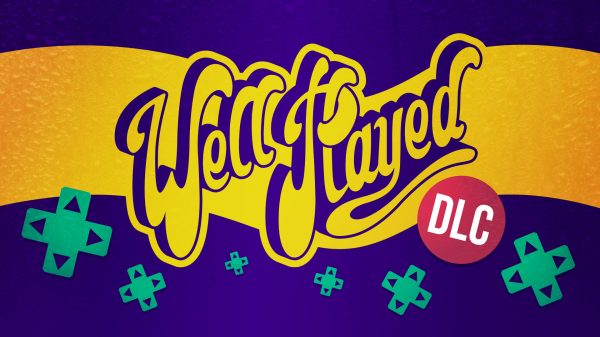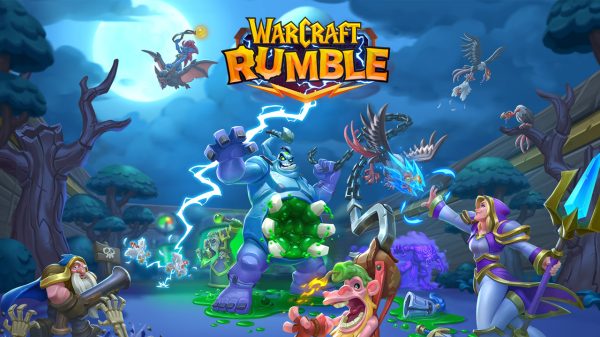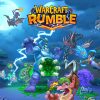At its core, Demon’s Mirror serves up what you would expect from a card-based battler. Knuckle down and get to drafting cards and utilise them to blast foes, discombobulate nerds, and protect your neck from ravenous beasts. But then you notice that a solid 30% of the screen is dominated by a game of Bejeweled and you realise you are not in Slay The Spire Kansas anymore. This is the big bodacious gimmick of the game, and I have to say: it kind of bloody works.
Within your tile-based playpen you do the usual gimmickry – chain together different symbols to utilise their effects, like matching 3 or more swords together to slap some damage on a foe, or pop some shields to build defence from an incoming attack. Perhaps you’d rather grab some essence to serve as a secondary resource for specialty cards or dip into the last offering, Willpower, a weird and wonderful gem that serves up a range of bonus effects depending on which character you are playing, and what breakpoint you have reached so far. Somehow you do all this while also playing a regular deck battler, filled with a gigantic selection of different card effects and attacks.
Matching that many swords with a +100% damage modifier feels criminal
As part of a casual conversation, explaining all of this makes it sound like a wild ride – like you are describing two or three games mashed together, but the truth of it all is that Be-Rad Entertainment has really distilled how much each system should play in the grander scheme of things. I mentioned in my preview of Demon’s Mirror that the card play on offer is more than solid, but also incredibly intuitive and well-explained. Every card that has some unique keyword effect will explain it in a tooltip when mousing over it, so you really need to struggle to find yourself in the dark. This careful consideration to make sure a player is never lost did a great deal to endear me to the game – because you better believe this train could have leapt off the tracks very easily.
Long before you start matching tiles or casting spells, your first port of call is to pick which character you are taking into a run. They each have their own quirks and gimmicks – Draga the dragon reduces card spell costs by completing tile strings, Wulf starts every turn with a free go on the tile board and Axo morphs board tiles into meta tiles that can be used in any combination, with the kicker that they also reduce the mana cost of any string that uses them. They each then have a unique deck dripping with signature flavour, though some cards are familiar throughout resulting in zillions of builds to try and put together. You are somewhat at the mercy of what you draft from random encounters or what might be sold in the shop, but you can absolutely guarantee that each run will be different from the last. They also manage to lean heavily into the expected archetypes of these games, with Wulf being more aggro focused compared to Draga, the diplomatic mage and Axo a comfy in-between.
The game is meticulous with making sure stuff is explained thoroughly
Knowing the playstyles of these characters is key to progress, so don’t be surprised if your first few runs end with sudden and impressive defeats. A paltry pool of hit points is all that separates you from the title screen, and with only a scant few ways to restore them, you need to learn to take out enemies quickly and try to mitigate as much damage as possible. Every character has cards that provide you with effective health shields, but the act of getting through your opponents can be chalk and cheese depending on who you brought to town. You will quickly realise that many of the enemies are packing some seriously hard hitters, so seeing an impending FORTY DAMAGE sneaking up on you will shift you from battlefield mastermind to a scared field mouse mighty quick.
But in the face of this terrifying reality, the game is all about monitoring the abundance of opportunities at hand. With no turn timer, each turn provides you the following elements of your battle plan to consider:
- Your hand
- Your tile board
- What the enemies are planning to do
- Your consumable scrolls (if you have any)
- Any buffs or debuffs on yourself or enemies
- How much Willpower or Essence you have in the bank
…and you would be forgiven for thinking that sounds like a lot to take in, especially when you factor in WHAT enemies you are facing and WHICH character you are playing, but really it all boils down to furious chin rubbing and the occasional “Hmmm….” as you formulate your grand design. Your mana pool is a shallow one, measured with a few meagre action points from which you draw both your card costs AND take turns at flicking your board tiles around, depending on what you are trying to achieve and the resources on offer. With so many options at hand, it does mean the game manages to cleverly stray far away from the occasional ‘tough luck’ turn that can happen in a card battler because if your hand is full of stinkers you can just turn to the board as your salvation – and just maybe squeak away that giant fist of looming damage.
The mad science Axolotl is a blast to play – literally
This is all great in theory – but you will always be at the mercy of your overall run and the goodies you managed to scrape together. Defeating combat encounters will net you some gold and a card draft, and should fate smile your way you may end up with some neat trinkets and combos that are doing good work – but sometimes Lady Luck just spits in your face. Like any good roguelite deckbuilder, your failures may be numerous but they all contribute to a level of progress that means your next battle will hopefully be less crushing. If you are feeling saucy, you can always tip the scales a little more in your favour by kicking into the Modifiers menu – a budget based area where you can pick custom advantages and disadvantages to impact your gameplay, adding EVEN MORE DEPTH to the title. So if you are comfortable with nerfing stuff like your HP regeneration rate, you can bask in the glory of having more mana during your turn. This may eke out a few more wins for you, which is great considering that when you eventually fall, you gain experience that will unlock new cards and toys – all in the hopes of eventually building that godlike deck and having THE run.
Final Thoughts
There is an astounding level of depth to Demon’s Mirror – a game that I feel I could play for months and still not come back with any reasonable idea of just how deep the well goes. Couple this with the unique play styles offered by each character and you have an amount of replayability that easily keeps you coming back for just one more go. And the real treasure of Demon’s Mirror is that it manages to make a compelling argument to keep dropping back in seeking that godly run, with each failure still being steeped in fun.
Reviewed on PC // Review code supplied by publisher
Click here for more information on WellPlayed’s review policy and ethics

- Be-Rad Entertainment
- Be-Rad Entertainment
- PC
- September 5, 2024



Known throughout the interwebs simply as M0D3Rn, Ash is bad at video games. An old guard gamer who suffers from being generally opinionated, it comes as no surprise that he is both brutally loyal and yet, fiercely whimsical about all things electronic. On occasion will make a youtube video that actually gets views. Follow him on YouTube @Bad at Video Games

































